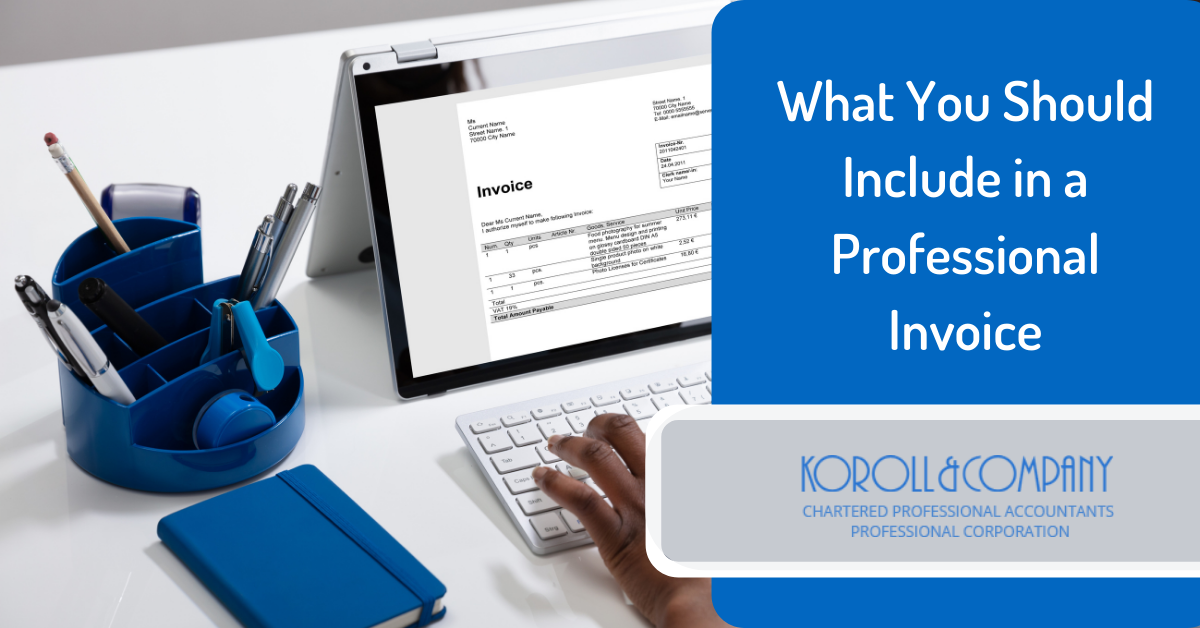 As a business owner, getting paid and getting paid on time is a critical part of running a successful business. And to do that, you need to provide your client with a well-formatted professional invoice that includes all the information your client needs.
As a business owner, getting paid and getting paid on time is a critical part of running a successful business. And to do that, you need to provide your client with a well-formatted professional invoice that includes all the information your client needs.
While the idea of creating an invoice seems straight forward, there are some important pieces of information business owners regularly forget, so let’s take a look at what information you should be including on all invoices to your clients.
#1 - The word ‘invoice’
Be sure to identify the invoice with the word “invoice”. This may seem like an obvious step, but it will help make sure the reader can differentiate it from a quote, credit or receipt. It will also ensure the person who receives it knows who it should go to (i.e. accounts payable).
#2 - Your company details
Be sure all invoices include your business name, address and contact information. This will ensure the customer knows who the invoice is from and how to contact you for questions or payment. If the name that should be on cheques written to your business is different from the business name that you put on the invoice, be sure to include this information either under the address or in the footer.
#3 - Your customer’s company details
Be sure to include your customer’s business name on their invoice. If you have it, you will also want to include their address. When starting business with a new client, be sure to ask what name they would like on the invoice. This will ensure that they have the information they need if their documents are ever reviewed by the CRA.
#4 - An invoice number
You will want to ensure that every invoice you create has a unique invoice number. This will help you keep track of your records and make it easier to refer back to the invoice at a later date. Most companies use a sequential number system while others will use a combination of numbers and letters.
#5- Purchase order number
If your customer provides you with a purchase order number, you should include it in the invoice.
#6 - The date
Include the date that the invoice is being issued. This will be important for record keeping and for payment terms, which we will discuss later.
#7 - A description of the goods/services
Be sure to provide a clear description of the goods/services provided. If there are multiple different items, list each one on a separate line. The same goods and services can be listed on one line, but be sure to note the quantity.
#8 - The cost of each good/service
Next to each good/service, be sure to include the cost. If there are multiple units, show the per unit cost and total for all units.
#9 - Subtotal
Sum up the total of all the goods and services and list the pre-tax amount.
#10 - Tax
Show how much tax is owing on the subtotal. (This is only needed if you are a GST/HST Registrant).
#11 - Total
Calculate the total of the goods/services and tax. This number is usually slightly larger and/or bolded to make it stand out more.
#12 - Payment Terms
Payment terms are how much time the customer has to pay the bill. Common payment terms are:
- PIA – the payment is due in advance (this is most often used for new clients or clients with poor payment history).
- Due upon receipt – the payment must be made right away.
- Net 15 – the payment must be made in 15 days.
- Net 30 – the payment must be made in 30 days.
- Net 60 – the payment must be made in 60 days.
- EOM 15 – the payment is due 15 days after the end of the month (this is a less common payment term).
You can also note that interest will be accumulated on late bills. Interest is usually 1 to 2% per month. In addition, you can choose to offer a discount for early payment. For example, if your payment terms are Net 30, you could offer a 1% discount for invoices paid within 10 days. To show this, you would put “1% 10 Net 30” on your invoice.
#13 - How To Pay
To help make the payment process seamless, let your customer know how they can remit payment.
This may include cash (with instructions on where to drop it off), cheque (with details on who to address it to if it is different than the business name you included in your company details), credit (provide the website or location they can go to and make the payment), electronic funds transfer (provide your email) or bank transfer (provide your bank, transit and account numbers).
#14 - GST/HST Number
If you are A GST/HST registrant, be sure to include your GST/HST number. Your customer will need this information if their GST/HST returns are audited and the CRA requires you to include it.
By including these 14 elements, you can help improve the professionalism of your invoices and help ensure you receive payment when it is due. Need further help? Contact the Koroll & Company team of chartered professional accountants today.






